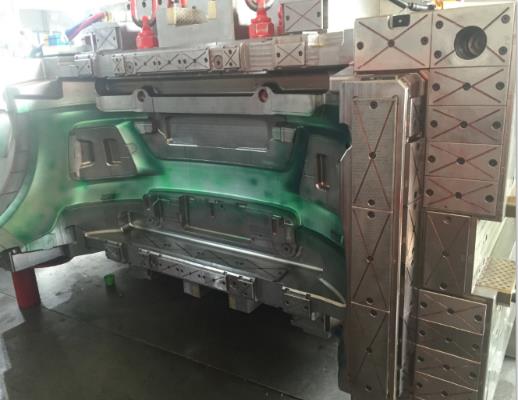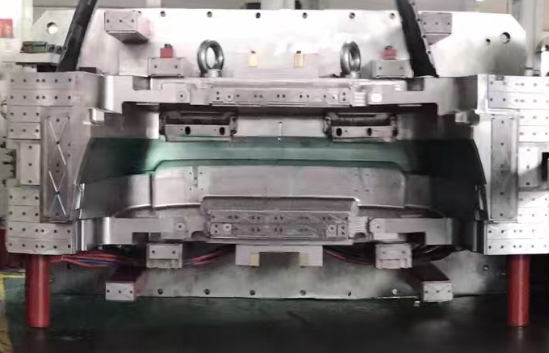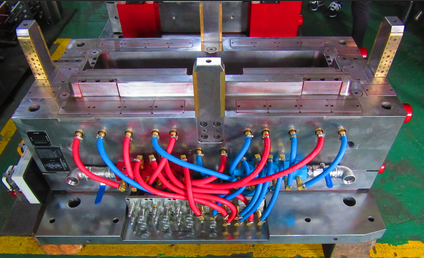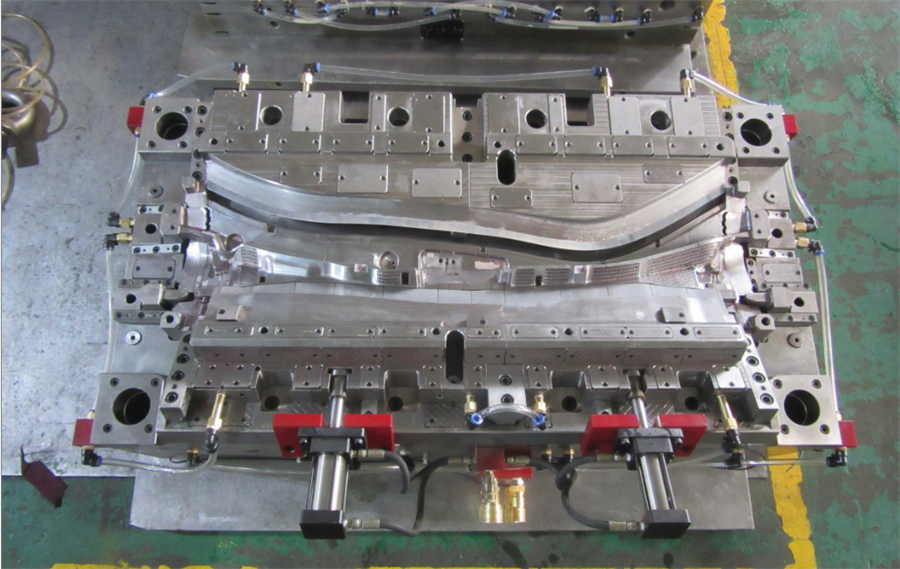What plastics are used for auto parts moulds?
Details:
With the development of vehicle lightweight and the increase of vehicle output, the consumption of plastics is increasing. In recent years, the market demand for energy conservation and consumption has been exerting pressure on the lightweight design of automobiles. To better adapt to increasingly stringent market regulations, many auto parts manufacturers have been looking for environmentally friendly materials to replace traditional plastics. So let's see what plastics are used for auto parts moulds.
Automotive interior mold
Engineering plastics
Engineering plastics have been widely used in automotive industry because of their good comprehensive mechanical properties. In this paper, polyamide (PA), polymethacrylate (PMMA), polyformaldehyde (POM), polyamide (PU), polycarbonate (PC) are introduced.
PA
Polyamide, commonly known as nylon, automotive parts mold used on the PA variety, commonly used are PA6, PA66 and PA610. PA is easy to print, easy to stain, excellent in electrical properties, resistant to drugs and oil. The common mechanical properties are toughness, high surface hardness, tensile strength, impact resistance, fatigue resistance, folding resistance, stress cracking resistance. The tensile and compressive strength of PA varies with temperature and moisture absorption, so water is the plasticizer of PA. The tensile and compressive strength of PA can be increased by about two times when glass fiber is added. The temperature resistance of PA is also improved correspondingly. The wear resistance of PA is very high, so it can work continuously without lubrication.
The disadvantages of PA are poor acid resistance, poor light resistance and poor resistance to contamination. Due to the influence of thermal expansion and water absorption, the dimensional stability of the parts is poor, and the shrinkage rate is 1-2%. It is necessary to pay attention to the size change of hygroscopicity after molding. The water absorption rate is 100%, which can absorb 8% when relative humidity is saturated, and the suitable wall thickness is 2 ~ 3.5mm.
Injection plasticity: PA due to the existence of amide group, strong water absorption and strong water absorption, therefore, in injection molding should be fully drying, in general, to dry at 120 C for 3 - 4 hours; PA viscosity is small, fast flow, in order to prevent nozzle flow, should use self-locking nozzle or nylon nozzle. At the same time, pay attention to mold accuracy.
Application: PA is mainly used in automotive field to manufacture hose (brake hose, fuel pipe), combustion oil filter, air filter, oil filter, pump shell, pump impeller, fan, brake liquid tank, power steering liquid tank, white leaf window, headlamp housing, seat belt.
PMMA
Polymethacrylate (PMA), commonly known as plexiglass, is widely used in automotive parts molds. It is resistant to outdoor aging, has excellent light transmittance, and does not affect its transparency. It can still penetrate 92% of sunlight after 240 hours of accelerated light aging. It still has 89% outdoor for 10 years, and the ultraviolet radiation reaches 78.5%. High mechanical strength, a certain degree of cold resistance, corrosion resistance, good insulation, size stability, easy to form, brittle quality, easy to melt in organic solvents, surface hardness is not enough, easy to scratch hair. Suitable plastic products: transparent structural parts with certain strength requirements.
Injection plasticity: the moisture absorption rate of PMMA is 0.3%, drying must be done before injection, generally drying 2-4 hours at 80 C; melt temperature in injection molding at 240-270 C, mold temperature should be controlled at 35-70 C.
PMMA is widely used in automotive lighting signs, door glass and lamp glass cover because of its good light transmission performance.
POM
Polyformaldehyde, commonly known as plastic steel, is an indispensable plastic for automotive parts mold. Its tensile strength, impact toughness, rigidity and fatigue strength, creep resistance is very high, dimensional stability is good, water absorption is small, friction number is small, with excellent friction and wear resistance, there is still a lot of rigidity in high temperature and water, chemical resistance. Corrosion performance is similar to that of PA, but the price is low, resistant to repeated twisting, and has prominent resilience. It can be used for -40 degrees Celsius -100 degrees Celsius for a long time. The disadvantage of POM is that it is susceptible to strong acid corrosion, high temperature resistance and poor thermal stability. The shrinkage rate is 2-3.5%, the suitable wall thickness is 1.5-2.5mm.
Injection plasticity performance: POM has obvious melting point, melting at 175 C, decomposing at 240 C, generally processing temperature is 190 220 C, its processing range is very narrow; POM does not absorb water, in injection molding, generally do not need to be dried, but high quality products can be dried at 60 C for 1 - 2 hours; temperature can not be too high, otherwise no stain. The color product will change colour. It has poor acid resistance and can not be dyed with acid dyes.
Application: POM is used in automotive instrument panel glove box accessories, various valves (drainage valves, air conditioner valves, etc.), various impellers (pump impellers, heater impellers, oil pump wheels, etc.), various electrical switches and electrical instruments on the pinion, various handles and door pins.
PC
Polycarbonate, with outstanding impact toughness and creep resistance, good heat resistance, cold resistance is also very good, embrittlement temperature up to - 100 C, bending strength and nylon equivalent, and has a high elongation and modulus of elasticity, but fatigue strength is less than nylon 66. Low water absorbency, small shrinkage and good dimensional stability. Wear resistance is similar to nylon, and has certain corrosion resistance, but the molding conditions are high. Good weather resistance, can be used at high temperature and high load conditions for a long time, but can not be used at wet temperature, poor solvent resistance, stress cracking phenomenon, poor fatigue strength. The shrinkage is 0.5-0.7% and the suitable wall thickness is 2-3.5mm. The shrinkage, mechanical strength and temperature resistance of PC can be improved by adding glass fiber. The long-term use of PC at about 100 C will increase the steel properties, and the internal stress can be improved by annealing.
Injection plasticity: PC has obvious melting point, melting at 220 C, decomposition at 350 C, general processing temperature is 250 320 C; It absorbs water, a small amount of water can cause it to decompose at high temperature, in the injection molding must be drying, drying temperature can be used 120 C drying 4 ~ 5 hours; PC melting viscosity is high, injection molding needs. The compression rate of PC has nothing to do with the processing conditions and the wall thickness of the product, its longitudinal and transverse shrinkage rate is close, so it can be processed into high precision products; its shrinkage rate is 0.5%.
PC-abs: PC-ABS is a blend of PC and ABS. It is usually supplied in granular form after blending. If the two materials are simply mixed and directly injected into the mold, the effect is very bad and the delamination will occur; PC has the advantages of rigidity and toughness, but the disadvantages are stress cracking and high viscosity; ABS has the advantages of good fluidity but low surface hardness; so the blended material PC-ABS retains the advantages of both; PC-ABS has high surface hardness. Higher rigidity and toughness, but also a higher stress cracking resistance; its mechanical properties between the two.
Application: PC is mainly used in automotive parts mold to manufacture lampshade, left and right wheel shield, instrument baffle body (PC + ABS), left and right wind frame cover, middle wind frame cover (PC + ABS), rear bumper cushion.
PU
Polyurethane is usually divided into rigid polyurethane and soft polyurethane according to the different products of polymerization. Rigid polyurethane has high strength, good toughness, good thermal insulation, good waterproof effect, simple molding process, high production efficiency; flexible polyurethane has good elasticity, sound absorption, aging resistance, anti-chemical medium ability, comprehensive mechanical properties far exceed PVC and other materials. Polyurethane polymerization is very convenient, not only can be carried out at room temperature and atmospheric pressure, but also can be directly foamed or sprayed after in-situ polymerization, repair and other construction.
Polyurethane foam plastics are widely used in automotive interior decoration and vibration absorbing parts, such as coating materials, rigid polyurethane plastic sheets, polyurethane elastomers, seat soft foam materials, decorative parts, sofa leather, roof accessories; the most widely used is a variety of soft and hard polyurethane foam materials, it has vibration isolation, sound insulation. Noise reduction, heat preservation and heat insulation; PU can also be used for polyurethane coatings, adhesives, sealants, etc. The PU representative parts on automobiles include dashboard, rearview mirror, bumper, seat cushion, headrest, steering wheel, dashboard anti-vibration pad, prop decoration, front roof lining, window frame, ceiling and side roof frame decoration, door lining, sunshade, rear roof frame decoration, etc.
Special plastic glass fiber reinforced plastics
Glass fiber reinforced plastics is based on the original pure plastics, adding glass fiber and other additives, so as to improve the use of materials. Generally speaking, most of the glass fiber reinforced materials are mostly used in the structural parts of automotive parts mold, which is a kind of structural engineering materials; such as PP, ABS, PA66, PA6, PC, POM.






